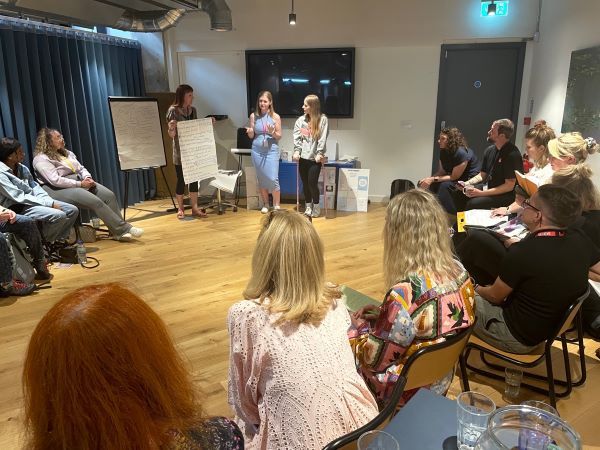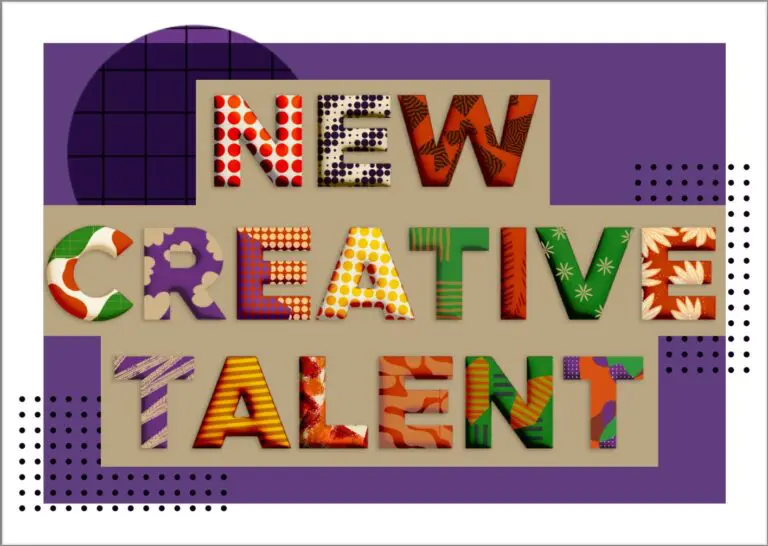
The UK population spends over £1.5 billion a year on greeting cards . It’s no wonder the industry is bursting with new talent and creativity as new publishers enter fray. It’s a highly competitive industry, but there’s always room for new ideas and talent.
There are two main routes for budding new artists. You can either to become a greeting card publisher yourself, or you can create and supply your artwork to existing publishers and be paid a fee for doing so.
Setting up your own greeting card publishing company can be exciting, but this decision should not be taken lightly. Going down this route will involve taking on all the set up and running costs of a publishing business as well as the production, selling and administrative responsibilities. This often leaves little time for you to do what you do best – creating the artwork.
The alternative route, is to supply existing greeting card publishers with artwork. (You can always set up your own company later when you know the ropes). In this article we’ll focus on becoming a designer of greeting cards with a view to supplying other publishers.
Some Terminology
A couple of industry terms to be aware of:
- Own Brand/Bespoke Publisher – These publishers design specific to a retailer’s needs.
- Spring Seasons – This is the industry term to describe greeting cards for Valentine’s Day, Mother’s Day, Easter and Father’s Day. Publishers generally launch their Spring Seasons ranges all together in June/July.
Finding the right publisher
There are estimated to be around 800 greeting card publishers in the UK, ranging in size from ‘one man bands’ to multi-national corporations. Not all publishers accept freelance artwork, but a great many do. Remember, whatever the size of the company, all publishers rely on good designs.
While some publishers concentrate on producing a certain type of greeting cards (eg. humorous, fine art or juvenile) many have diversified and publish a variety of greeting card ranges. This of course makes it more difficult for you as an artist to target the most appropriate potential publishers for your work. Visit the GCA Members’ Directory to find out more about UK card publishers.
There are various ways in which you can research the market, quickly improve your publisher knowledge and, therefore, reduce the amount of wasted correspondence:
Go Shopping
Browse the greeting card displays in card shops, department stores, supermarkets and gift shops. This will not only give you an insight as to what is already out in the market but also which publishers may be interested in your work. You’ll often find publishers’ contact details on the backs of the cards.
Trade Fairs
There are a number of trade exhibitions held during the year at which publishers exhibit their greeting card ranges to retailers and overseas distributors. By visiting these exhibitions, artists will not only be able to gain a broad overview of the design trends in the industry, but the current ranges of individual publishers.
Some publishers are willing to meet artists and look through artists’ portfolios on the stand, others are not. Do not be put off by the latter. If you believe your work could be relevant for them, ask for a contact name and follow it up afterwards. Some larger companies may suggest you contact their art director or design manager, while for smaller businesses it may be the managing director of the company who deals with the design aspect.
It is a good idea to have a supply of business cards handy, perhaps illustrated with some of your work, to leave with the publisher.
It’s important to remember, exhibitors at trade shows are primarily there to meet existing customers and find new ones. Finding artists is low on their list of priorities at shows, so don’t linger at stands – make a note of who they are and catch up with them later.
Here’s a list of popular trade fair for greeting cards.
Trade Magazines
There are two main Greeting Card trade Magazines to check out: Progressive Greetings, Greetings Today, and PGBuzz (online). All are worth checking out to get an insight into the world of greeting cards.
The editorial and advertisements will provide immediate insight into publishers, new products, industry issues and news of the day. It’s a good way to find publishers to look up.
Progressive Greetings also contains a segment called Art Source, an editorial feature which devotes at least two pages in every issue of the magazine to promoting the talents of artists, designers and photographers. At least one artist is featured in depth every month. This coverage is a free service for artists – contact Max Publishing, the owners of Progressive Greetings for more information on how to be featured. You’ll need to send information covering your art style, subject matter, medium used and inspiration together with a high resolution (at least 300dpi) image of your work – don’t send originals.
The GCA Website Jobs board
You should regularly check the GCA Jobs board where our members regularly advertise for fulltime, part-time and commission based vacancies.
Approaching a Publisher
The first step is to establish whether the publisher accepts work from freelance artists and their requirements for an artist’s submission.
Before you send publishers examples of work, do your research and make sure that the artwork you send is suitable and applicable. It is better to send several examples of your work to show the breadth of your artistic skills; up to 10 or 15 designs is a good amount, preferably as jpegs or pdfs at a decent resolution. You should also provide links to your website and blog. Be sensible when sending work, don’t send lots of very large files in one go as email attachments.
Some publishers prefer to see finished designs while others are happy with well-presented sketches. The ability to work digitally is important, some publishers are reluctant to scan and implement non-digital designs. The publisher is usually looking for a distinctive style, creative thinking, market awareness and professionalism. If they like your style they may bear you in mind when commissioning new ranges.
A golden rule is to never send originals when sending submissions by post. Instead send photocopies, laser copies or photographs. It is a good idea to include at least one design in colour to aid visualisation for the publisher.
Remember that publishers work a long way in advance. Christmas ranges for example are launched to the retailers in January; Spring Seasons ranges (Valentine’s Day, Mother’s Day, Easter and Father’s Day) are generally launched in June/July. Development of a range may take up to six months prior to launching.
There is lots of help available from GCA supplier members, if you decide to licence your designs you will need to take advice, read our blog on Copyright and Licensing or more information. Alternatively you may prefer to find an agent to represent you, read the GCA’s blog on Working with an Artist’s Agent to learn more.
When Interest Is Shown
Some publishers respond to artists straight away while others prefer to deal with a pile of artists’ submissions on a monthly basis. Following up your submission with a phone call is natural; however do avoid badgering immediately after – remember that publishers receive numerous submissions and that this can be a long process. Do not be disheartened if you hear nothing for a few weeks.
When a publisher does contact you, it may be to request more submissions on a specific design style or of a specific character. This speculative development work is usually carried out free of charge.
A publisher interested in buying your artwork will then issue you with a contract. This may cover aspects such as: the terms of payment; rights of usage of the design (eg. is it just for greeting cards or will it include gift wrap, stationery?); territory of usage (most publishers these days will want worldwide rights), ownership of copyright or license period. The GCA has specialist legal companies Supplier Members who are able to provide advise and support to artists on contracts.
The Association of Illustrators is a membership organisation providing professional support and advice for illustrators. It publishes The Illustrator’s Guide to Law and Business Practice, a comprehensive guide which covers all aspects of the law likely to affect illustrators. It contains recommended terms and conditions, advice on calculating fees, how to write a licence agreement and more.
Types of Publisher
There are two broad categories of publisher – wholesale and direct-to-retail (DTR) – differentiated by the distribution method used to reach the retailer.
Wholesale
Wholesale publishers distribute their products to the retailer via greeting card wholesalers or cash & carries. They work on volume sales and have a rapid turnover of designs. Many designs are used with a variety of different captions. Eg. a floral design may be used for mother, gran, auntie, sister.
Remember that the vast majority of wholesale cards are captioned. It is usual to leave a blank space on the design to accommodate the caption. While wholesale publishers were hitherto generally only interested in traditional, cute and juvenile designs, they now publish across the board including contemporary, humorous ranges.
Direct-to-retail
Direct-to-retail (DTR) publishers supply retailers via sales agents or reps. The majority of greeting cards sold through specialist card shops and gift shops are from DTR publishers. This sector spans from the multi-national corporations such as Hallmark down to the small, trendy niche publishing companies. Direct-to-retail publishers launch series of ranges based on distinctive design themes or characters. Categories of DTR cards include contemporary art/fun, fine art, humour, children’s, photographic and traditional.
Money Matters
There are a number of different ways an artist can be paid by publishers. Payments can be made on a per design or range basis, it is important that any agreement for payment includes a clear understanding of what is being agreed. Everything is open to negotiation and will be dependent on may things. Below are some examples:
- Flat Fee – the publisher makes a one off payment to the artist for ownership of a design for an unlimited period. The fee could be anything from £150-£250 for one design, with a sliding scale coming into play for more than one design.
- Licensing Fee – this grants the publisher the right to use artwork for specified types of products and for a specified number of years, after which the full rights revert to the artist. Artists could be paid in the region of £150 + per design for this.
- Licensing Fee + Royalty – similar to above, but also with a royalty payment on each card sold. Artists could receive £100+ licensing fee plus 3% of trade price of each card sold, for example.
- Advance Royalty Deal – the artist is paid a goodwill advance on royalties. In the case of a range, the artist could receive a goodwill advance of say £500-£1,000 and 5% additional royalty payment once the threshold is reached, again this is an example only.
- Royalty Only – the artist will receive regular royalty payments based on the number of cards sold. Royalties are generally paid quarterly. Artists should expect a sales report and royalty statement.
Please note that the fees stated should only be regarded as a rough guideline. Fees and advances are generally paid on completion of artwork.
Often publishers will expect worldwide rights. This means that the artist being paid royalties will also receive royalty payments for sales overseas, although these will be on a pro rata basis to the export trade price, which is often significantly lower than the domestic trade price.
DOs & DON’Ts for Greeting Card Artists
Further Reading and Useful Links
Read the stories of GCA members in our ‘Meet the Member‘ blogs, where others share their experiences of starting out in the greeting card industry.
Also do visit greeting card retailers and tradeshows to learn about the card industry, see GCA blog for relevant UK trade shows.
Other useful links include:
There is a lot more information in the GCA Members’ Library to guide you and provide support as you move forward. To join the GCA click here.
Publishers looking for Artists
Are you a publisher looking for artists or designers? Remember to advertise your vacancy, even if it’s part time or commission based, on the GCA jobs board. You can do this by logging in to your account and clicking Jobs.
Alternatively if you would rather work with an agent, who could represent you read our Working with an Artist Agent blog.





